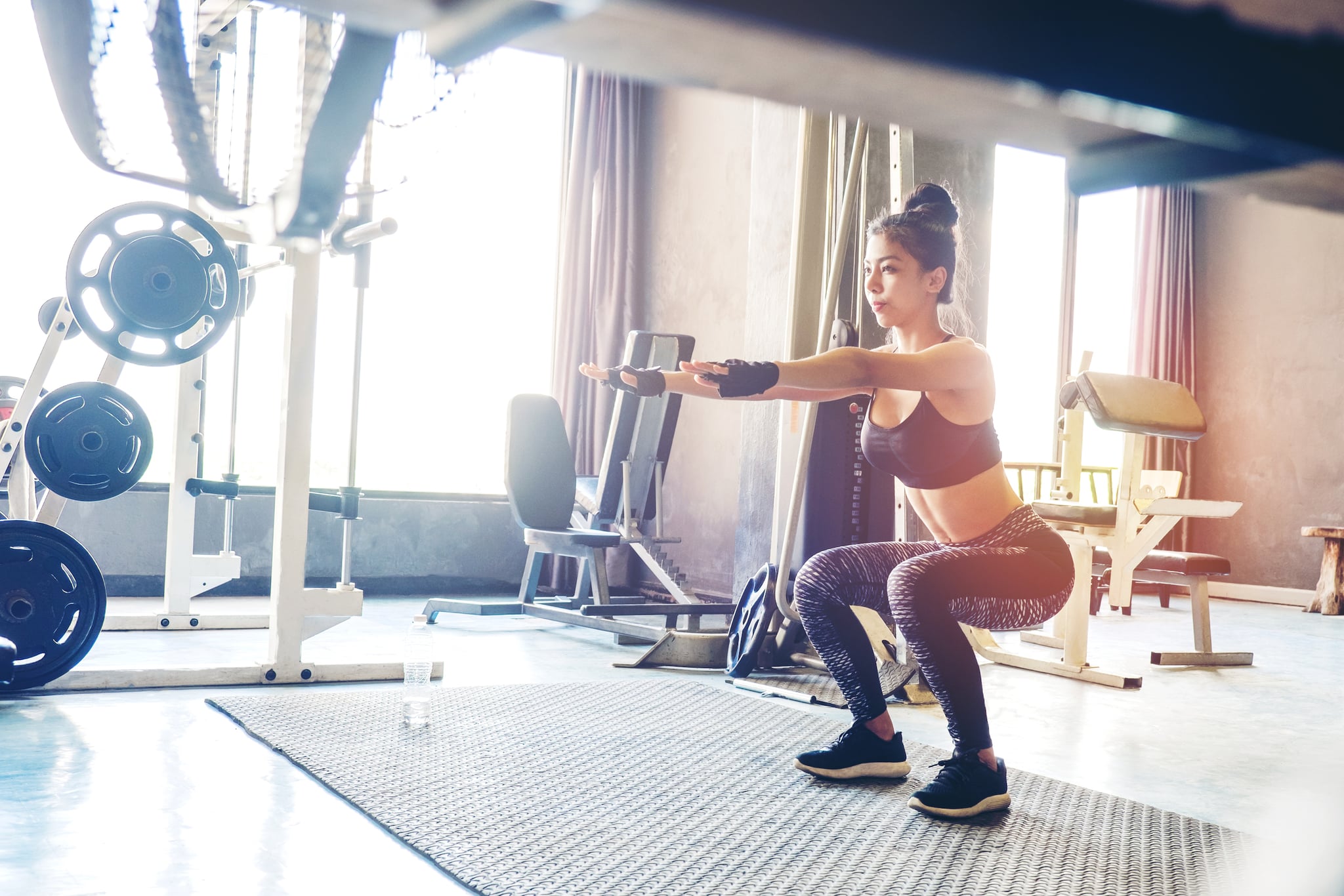

I'm uneducated in the sneaker department - maybe because I spent a good majority of my life exclusively swimming for exercise.
Besides my beloved running sneakers, I've never really investigated nor purchased cross-training shoes - despite the fact that, now, I regularly take HIIT classes and lift weights.
At first, ignorance was bliss, but after upping my strength-training game and regularly squatting in my running sneakers, I felt like my stability was majorly lacking. I even started feeling post-workout pain in my ankles and knees.
Totally fed up with feeling like crap, I experimented by self-diagnosing myself with a new pair of sneakers - the Nike Air Max Bella TR 2 ($80) - made specifically for the strength-training exercises that now dominate my gym time.
The lightweight, breathable sneakers are designed with a flat, rubber outsole to boost stability, as well as a heel strap that is meant to provide containment when squatting with heavy weights.
A few uses in, I started to notice an improvement in my balance when I was lunging and squatting. The discomfort in my ankles would usually pop up a few hours after my workout, but after switching shoes, the dull aches drastically decreased.
Curious to learn if this was a coincidence, I reached out to Ben Lauder-Dykes, a NASM-certified trainer at Fhitting Room and Running Mechanics Performance Coach L2, for his thoughts on if switching up your sneakers can really make a difference in your workouts.
According to Lauder-Dykes, different activities place different physical demands on the body, therefore it's important to wear shoes made specifically for that activity.
Think about it like this: you wouldn't wear a pair of ballet shoes to run a 5K.
Lauder-Dykes used running and lifting as examples.
"With running there is more impact from landing where you would prefer a shoe with more cushioning, versus lifting where you want a shoe with less cushioning and more stability," he explained.
While a running shoe isn't that much different than a HIIT shoe, Lauder-Dykes said that a shoe made for HIIT movements will provide more support and stability than the running shoe, allowing the exerciser to feel more anchored to the floor in order "to produce higher amounts of force when performing movements like an air or weighted squat."
And yes - wearing the wrong shoes for your activity could set you up for injuries.
"Shoes without enough cushioning for running or dynamic HIIT movements could lead to overuse injuries, such as plantar fasciitis or tendonitis," Lauder-Dykes said.
On the flip side, wearing shoes that push you into the forefoot could make it difficult for you to stay stable, leading to issues with loading the right muscles and joints - a common problem when performing compound lower-body movements, for example.
"It can be difficult to use the hamstrings and glutes, placing extra pressure and tension in the low back and knees," he added.
But know that it's no big deal if your budget has you holding back from buying a few different pairs of sneakers; just be sure to purchase one quality pair that'll work for a few different activities.
If you do a lot of cardio, HIIT, and lifting, Lauder-Dykes suggested purchasing a structured running shoe.
"The shoe has more stability that will help with strength exercises, but also cushioning for running and dynamic movements."
And when in doubt about what sneakers to buy for your workouts - or if you're having pain while exercising - reach out to your doctor or a certified personal trainer for thoughts and advice on next steps.
Click here for more health and wellness stories, tips, and news.



0 comments :
Post a Comment